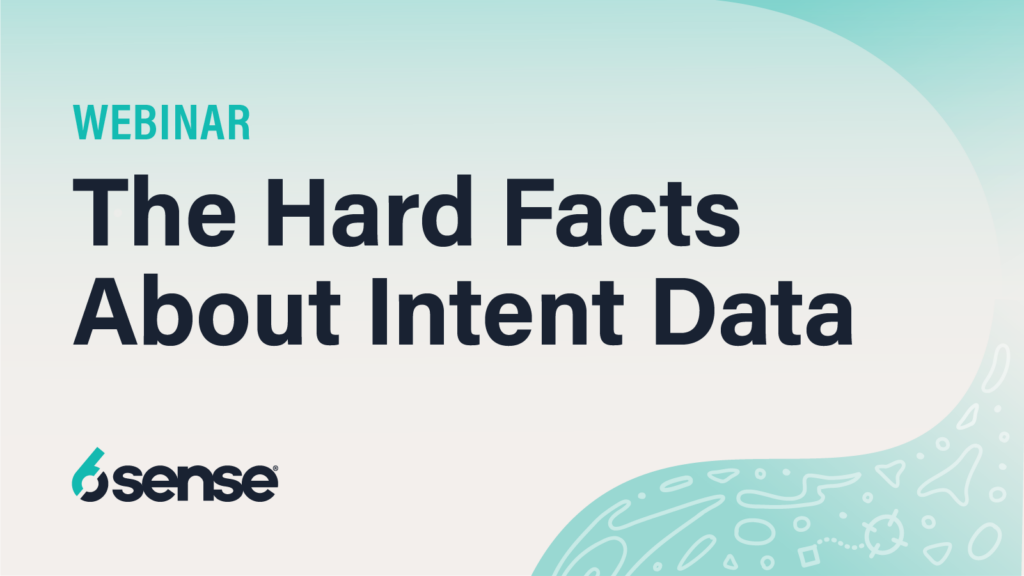Don Otvos is the Vice President of Revenue Operations at LeanData, where he spearheads the establishment of operational solutions that produce repeatable performance and sustainable results. Connect with Don on LinkedIn, Twitter and Salesforce Trailblazer.
I’ve said it before, and I’ll say it again: Business Development Representatives (BDRs) play the most important role in the revenue lifecycl
I’m sticking to my position, and here’s why:
Within the revenue team, we have continual conversations about aligning Marketing and Sales. It’s a topic at every site with a blog, every revenue conference, and at every sales kickoff meeting as we steam full speed ahead into 2022.
Sales and Marketing alignment issues generally fall into two categories: 1) Sales wants more leads, and 2) Marketing wants the leads that have been sourced to be followed up with.
The people in the middle, of course, are the BDR team. BDRs receive the handoffs of leads from Marketing, and they are the first Sales touch at the top of the funnel. From there, BDRs filter marketing qualified leads (MQLs) into meetings. Lastly, BDRs are perfectly positioned to provide a valuable feedback loop to Marketing on its campaigns and promotions.
The BDR Struggle Is Real
I started my career in Sales, as an SDR, and everyone who has sat in the seat knows all leads are not equal.
It’s true, despite how some marketers might feel. As leads are generated, some prove to be very valuable; others prove not so valuable — students, media, buyers without budgets, prospects outside your ideal customer profile (ICP), and sometimes even competitors.
Additionally, BDRs are often handcuffed with bad data. BDRs often have to fight through the following:
- Receiving leads that should have been routed to another rep covering the territory or industry vertical
- Receiving leads connected to Accounts with open Opportunities being worked by Account Executives (AEs)
- Receiving leads from a customer account
That last one, treating an existing customer as a new prospect, can be a doozy. Talk about a poor customer experience!
BDRs sit at the handoff between Marketing and Sales, in the middle of it all, and if handoffs don’t go smoothly, then BDRs are not set up for success. Downstream, problems are amplified as AEs have limited chances to close deals … and even further downstream, Customer Success gets fewer chances to further nurture valuable customer relationships.
Unfortunately, at too many organizations, Sales and Marketing doesn’t know enough about the struggle of the BDR team to make them more successful.
Empower BDR Success with RevOps
Operations functions are increasingly consolidating around Revenue, giving birth to Revenue Operations or RevOps. With that consolidation, RevOps become tactical owners of the customer journey.
RevOps builds the go-to-market (GTM) engine, and it determines how best to scale for growth. A key area of focus is empowering the BDR team.
First up for RevOps is collaborating with Marketing and Sales leadership to prioritize GTM campaigns and motions, and, subsequently, prioritize the leads acquired through those channels.
Prioritizing Leads
Prioritizing leads allows for the formulation of a big-picture view of an organization’s lead flow and guides capacity planning. Do we need to increase the size of the BDR team to handle the lead load? Or BDRs going hungry because there are not enough high-priority leads?
At LeanData, we prioritize leads with the assignment of a P1, P2, or P3 classification based on the marketing campaign the leads came in on.
P1s arrive through activities like a demo request, an AppExchange download or a contact now form fill. These are self-qualified hand raisers, and they want — and expect — immediate attention and follow-up. We aim to do just that by fast-tracking them to the proper reps with a short SLA for response.
P2s are leads that have attended a live event or viewed a webinar on demand. While they are routed into SEP sequences/cadences, BDRs have time to personalize their messages — particularly that first 20% of the template message — to make their outreach more engaging. Jeremy Donovan, my former colleague at Salesloft, wrote a wonderful blog post about personalization that I recommend you review.
Prioritization of leads is a key enabler of BDRs, and the result is an improved experience for leads at every stage of the buyer journey.
SLAs and Expectations
With leads prioritized, RevOps assigns a service level agreement (SLA) accordingly, and measures SLA performance of the representatives who are tasked with follow up.
At LeadData, P1s require an immediate response — with SLAs measured in minutes. P2s, on the other hand, don’t require such a rapid response time and allow for more personalization in the BDRs’ outreach — up to 48 hours at LeanData.
Instant Notifications
For BDR handoffs, we use integrated Slack and email notifications to alert reps. It’s not just a notification of a lead, but also the campaign where the lead came from. Campaign context is critical. We don’t want BDRs to lead first touches without knowing the context of the conversation.
Enablement
Along with routing leads, we empower the BDR team with sales engagement platforms (SEPs) — at LeanData, we integrate with both Salesloft and Outreach.
Two things are important here. First, RevOps ensures SEP sequences/cadences are pre-built and continuously measured and evaluated for improvement. A rep never has to start from scratch.
Secondly, RevOps ensures the handoff is facilitated with all the contextual information a BDR needs to make first-touch contacts that are relevant to leads. For example, if a lead has entered through a demo request, it gets routed to the Outreach sequence loaded with a demo context.
Conversely, if the lead entered via the AppExchange, the Salesloft cadence reflects that customer journey.
Summary
A relay race in track and field as an appropriate metaphor for lead management — passing the baton, a lead, from Marketing to BDRs, from BDRs to AEs, and finally, from AEs to Customer Success managers. It’s important to never lose track of the baton, the lead.
In a relay race, if you drop the baton, you lose. In GTM motions, the same applies: drop the lead, you lose the deal.
With BDRs responsible for leads after the initial handoff, they become the most important role in the race to win customers. RevOps needs to be there to ensure their every success!






